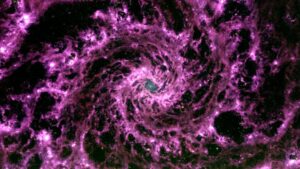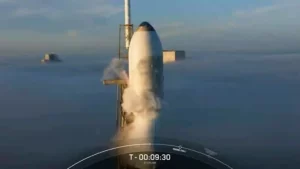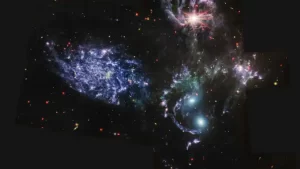
NASA Institute for advanced concepts is famous for supporting strange ideas in the field of astronomy and space exploration. Since it was re -established in 2011, the Institute has supported various projects as part of the three -phase program.
However, so far, only three projects have received phase III funds. And one of those who have just released a white book that describes a mission to get a telescope that can effectively see biosignatures in the nearest Exoplanet by utilizing our own sun’s gravity lens.
The difference in phase III came with funding US $ 2 million, which in the case went to JPL, whose scientist, Slava Turyhev, was the main investigator in the first two phases of the project.
He cooperates with Aerospace Corporation for this latest white book, which describes the concept of mission in more detail and defines what technology already exists and what requires further development.
However, there are some striking features of this mission design, one of which is touched in detail at Centauri Dreams.
Instead of launching a large craft that will take a long time to travel anywhere, the proposed mission will launch several small cube worms and then assemble themselves on a trip 25 years to the point of the Sun Gravity Lens (SGL).
The “point” is actually a straight line between any stars around it and around and somewhere between 550-1000 AU on the other side of the sun. That is an extraordinary distance, far further than 156 very small AUs that have been embraced by Voyager 1 for 44 years to be crossed.
So how can a spacecraft reach three times the distance while taking almost half of the time? Simple – it will dive (almost) to the sun.
Using gravitational impulses from the sun is a method that is tried and correct. The fastest man -made object ever, Parker Solar Probe, uses such techniques.
However, it is increased to 25 AU a year, the expected speed where this mission must travel is not easy. And that will be more challenging for the ship’s fleet than only one.
The first problem is material – solar screen, which is a propulsion method that is liked by the mission, does not do it well when experiencing solar intensity that will be needed for gravitational stalk.
In addition, electronics on the system must be harder radiation than existing technology. However, these two known problems have potential solutions in active research.
Another problem that seems clear is how to coordinate parts of several satellites through the type of gravitational maneuvers that cut hearts and still allow them to coordinate to join to effectively form a spacecraft that is fully functioning in the end.
But according to the writer of the newspaper, there will be more than enough time on the trip 25 years to the point of observation to actively rejoin with one cubesats to be a cohesive whole.
What can be produced from the cohesive whole is a better image than exoplanet that humanity tends to lack the mission of the full interpretation.
Which exoplanet will be the best candidate will be the topic of heat debate if the mission is moving forward, because more than 50 so far has been found in the livable zone of their stars. But there is definitely no guarantee.
The mission has not received any funds or indications that will be carried out in the near future. And many technologies still need to be developed before such missions are even feasible.
But that is precisely how missions like that always begin, and this one has a more potential impact than most. With luck, at a certain point in the coming decades, we will receive a crisp from the exoplanet image that has the potential to be livable as we might receive in the future.
The team behind this research is worth praised because it puts the foundation for such ideas.













